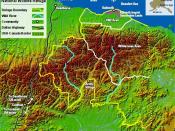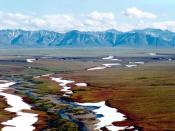The United States currently imports more than half its oil consumption, and reliance on foreign oil is growing. However, the oil of the United States is in plentiful supply and companies within the country can deliver the energy needed to meet America's needs, but only if greater access is provided to government lands for responsible exploration and development, including Arctic lands. Arctic National Wildlife Refuge (ANWR), is a vast region of land located within the Arctic Circle in the Northeast corner of Alaska. It covers 19.8 total acres; eight million acres of ANWR was designated for wilderness, and 1.5 million acres were selected for review by the Department of Interior (DOI) to suggest future drilling for high potential amounts of oil for the United States. The country's' long-term energy strategy focuses on advancing technologies to promote a transition toward more sustainable energy systems. Over time, the state of technology exerts enormous control on how energy affects the Nation's economy, environment, and security.
In the future, the quality of life will depend significantly on the scientific and technological advances supported by today's energy policies. Drilling for oil in the ANWR would decrease America's reliance on foreign oil imports, stabilize energy markets, create new job opportunities in the United States with virtually no threat to the environment. Therefore, The United States should drill for oil in the ANWR. First, Drilling in the Arctic would decrease the United States' dependence on foreign oil. Many people, by virtually blame oil rich countries, such as Saudi Arabia and Kuwait, for not doing enough to keep energy prices at a minimum cost. If drilling in the Arctic occurs, then the United States will not have to rely solely on the expensive transportation of incoming oil from other countries. Drillers say that the United States...


